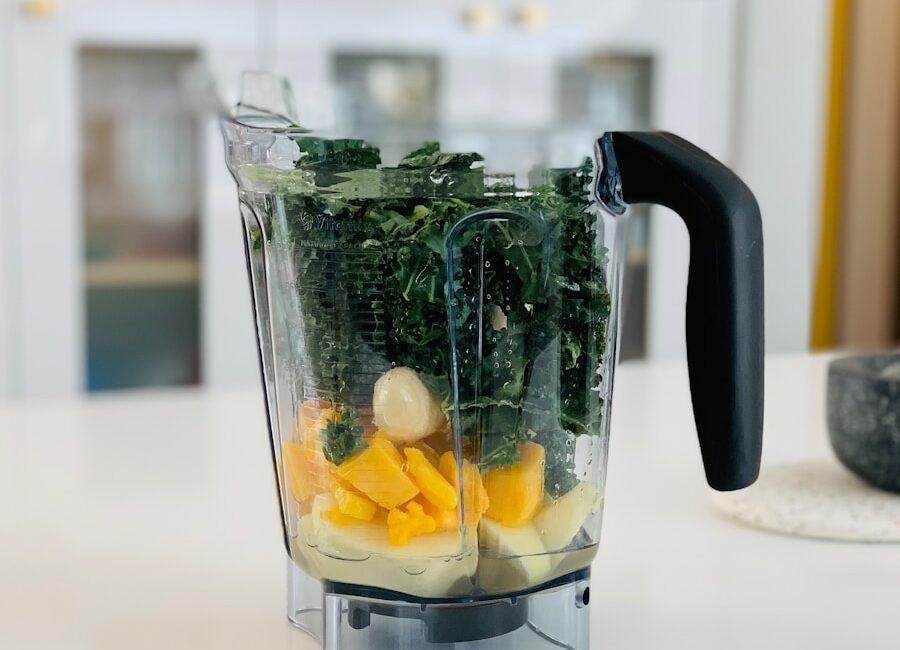A baby food maker is a practical and efficient device for parents who prioritize providing their infants with wholesome and nutritious meals. By preparing baby food at home, parents can exercise control over the ingredients, ensuring their baby receives optimal nutrition. This device enables the easy pureeing of fruits, vegetables, and meats, allowing parents to create tasty and healthy meals for their baby.
This approach can lead to long-term cost savings and eliminate reliance on commercial baby food, which can be expensive and may contain inferior ingredients. Furthermore, homemade baby food can introduce infants to a diverse range of flavors and textures, contributing to the development of their palate and promoting healthy eating habits in later life. The use of a baby food maker also offers the advantage of customizing the consistency of the food to suit a baby’s individual needs.
Whether a baby is just beginning to consume solids or is ready for more textured foods, this device enables parents to create meals tailored to their baby’s requirements. This feature is particularly beneficial for babies with allergies or sensitivities, as it allows parents to avoid potential allergens and carefully control the ingredients in their baby’s food. Overall, a baby food maker is a valuable tool for parents seeking to provide their babies with a strong foundation for healthy eating.
Key Takeaways
- Understanding the benefits of a baby food maker can help you make an informed decision for your little one’s nutrition.
- Factors to consider when choosing a baby food maker include capacity, ease of cleaning, and versatility.
- Comparing different types of baby food makers, such as steaming and blending or all-in-one systems, can help you find the best fit for your needs.
- Tips for using a baby food maker safely and effectively include following the manufacturer’s instructions and properly storing homemade baby food.
- Budget-friendly options for baby food makers can provide quality and convenience without breaking the bank.
Factors to Consider When Choosing a Baby Food Maker
Types of Baby Food Makers
There are various types of baby food makers available, including manual, electric, and combination models. Manual baby food makers are generally more affordable and easy to use, but may require more effort and time to operate. Electric baby food makers, on the other hand, are more convenient and efficient, but may be more expensive and require access to an electrical outlet. Combination models offer the best of both worlds, providing both manual and electric options for creating baby food.
Capacity, Size, and Maintenance
Another crucial factor to consider is the capacity and size of the machine. Depending on how much baby food you plan to prepare at once, you may want to opt for a larger or smaller capacity machine. Additionally, consider the ease of cleaning and maintenance of the baby food maker, as this can impact how frequently you use it. Look for a machine with dishwasher-safe parts and easy-to-clean surfaces to make meal prep as hassle-free as possible.
Additional Features and Accessories
Finally, consider any additional features or accessories that may be important to you, such as steaming capabilities, multi-functionality, or included recipe books. By taking these factors into account, you can find the best baby food maker for your specific needs and preferences.
Comparing Different Types of Baby Food Makers
There are several different types of baby food makers available on the market, each with its own unique features and benefits. Manual baby food makers are typically the most affordable option, as they do not require electricity or complex machinery. These machines often work by manually pureeing or mashing fruits, vegetables, and meats to create baby food.
While manual baby food makers may require more effort and time to operate, they can be a great option for parents who want a simple and budget-friendly way to make homemade baby food. Electric baby food makers are another popular option, offering convenience and efficiency for busy parents. These machines typically have a motorized blade or pureeing function that quickly and easily turns fruits, vegetables, and meats into smooth baby food.
Electric baby food makers may also have additional features such as steaming capabilities, making them a versatile option for creating a variety of homemade baby meals. While electric baby food makers may be more expensive than manual options, they can save time and effort in the long run, making them a popular choice for many parents. Combination baby food makers offer the best of both worlds, with both manual and electric options for creating homemade baby food.
These machines often have a manual pureeing function as well as an electric motorized blade or steaming capabilities, providing flexibility and convenience for parents. Combination baby food makers may be more expensive than manual or electric options, but they offer versatility and ease of use that can be valuable for busy parents. By comparing the different types of baby food makers available, you can find the best option for your specific needs and preferences.
Tips for Using a Baby Food Maker Safely and Effectively
| Brand | Features | ||
|---|---|---|---|
| BEABA Babycook | Steam, blend, defrost, reheat | ||
| Cuisinart Baby Food Maker | Steam, chop, puree, bottle warmer | ||
| Babymoov Duo Meal Station | Steam, blend, defrost, reheat, sterilize |
Using a baby food maker safely and effectively is important for ensuring that your little one’s meals are healthy and nutritious. One important tip for using a baby food maker is to always follow the manufacturer’s instructions and guidelines for operation. This can help prevent accidents or damage to the machine, ensuring that it continues to work properly for making homemade baby food.
Additionally, be sure to clean and maintain your baby food maker regularly to prevent bacteria or mold from growing on the machine or its parts. This can help keep your baby’s meals safe and free from contamination. Another tip for using a baby food maker safely is to always supervise the machine while it is in use, especially if it has motorized blades or steaming capabilities.
This can help prevent accidents or injuries from occurring while preparing homemade baby food. Additionally, be mindful of the temperature of the food when using a baby food maker with steaming capabilities, as hot foods can cause burns if not handled carefully. By following these tips for using a baby food maker safely and effectively, you can ensure that your little one’s meals are made with care and attention to their health and safety.
Budget-Friendly Options for Baby Food Makers
For parents on a budget, there are several budget-friendly options for baby food makers that can help make homemade baby food more accessible and affordable. Manual baby food makers are typically the most affordable option, as they do not require electricity or complex machinery. These machines often work by manually pureeing or mashing fruits, vegetables, and meats to create baby food.
While manual baby food makers may require more effort and time to operate, they can be a great option for parents who want a simple and budget-friendly way to make homemade baby food. Another budget-friendly option for baby food makers is to look for sales or discounts on electric or combination models. Many retailers offer promotions or deals on baby food makers throughout the year, making it possible to find high-quality machines at a more affordable price.
Additionally, consider purchasing a gently used baby food maker from online marketplaces or secondhand stores to save money on this essential kitchen tool. By exploring these budget-friendly options for baby food makers, you can find an affordable way to make healthy and nutritious meals for your little one.
Reviews and Recommendations for the Best Baby Food Makers on the Market
Researching Online Reviews
Websites and parenting forums offer a wealth of information, featuring reviews and ratings for various baby food makers. Look for machines with positive reviews that highlight their ease of use, durability, and ability to create smooth and consistent purees.
Seeking Recommendations from Others
Asking friends or family members for recommendations can also be helpful. They can share their personal experiences with specific baby food makers, providing valuable insights into their effectiveness. Popular brands, such as Beaba, Baby Brezza, Cuisinart, and NUK, offer unique features and benefits for creating homemade baby meals.
Comparing Brands and Reading Testimonials
Research each brand’s offerings and compare their machines to find the best option for your specific needs and preferences. Additionally, read customer testimonials and reviews on retailer websites, such as Amazon or Walmart, to gain a deeper understanding of the experiences of other parents who have used these machines. By exploring reviews and recommendations, you can make an informed decision on which baby food maker will work best for your little one.
Making Homemade Baby Food with a Baby Food Maker: Recipes and Tips
Once you have chosen a baby food maker, it’s time to start creating delicious homemade meals for your little one. There are countless recipes and tips available for making homemade baby food using a baby food maker, allowing you to provide your little one with nutritious and flavorful meals. When making homemade baby food, it’s important to start with fresh fruits, vegetables, and meats that are free from pesticides or additives.
Be sure to wash all produce thoroughly before using it in your homemade baby meals. Some popular homemade baby food recipes include pureed sweet potatoes, mashed bananas, steamed carrots, and blended applesauce. These simple recipes can be made using a variety of fruits and vegetables with different textures and flavors to introduce your little one to a wide range of healthy foods.
Additionally, consider adding herbs and spices such as cinnamon or nutmeg to enhance the flavor of your homemade baby meals without adding salt or sugar. By exploring recipes and tips for making homemade baby food with a baby food maker, you can provide your little one with nutritious meals that they will love. In conclusion, choosing the best baby food maker for your little one involves understanding the benefits of these machines, considering important factors such as type and capacity, comparing different options available on the market, using them safely and effectively, finding budget-friendly options, reading reviews and recommendations from other parents, and exploring recipes and tips for making homemade baby food.
By taking these factors into consideration when choosing a baby food maker, you can find the best option for your specific needs and preferences while providing your little one with healthy and nutritious meals that they will love.
FAQs
What is a baby food maker?
A baby food maker is a kitchen appliance designed to help parents easily prepare and cook homemade baby food for their little ones. It typically includes features such as steaming, blending, and reheating functions.
What are the benefits of using a baby food maker?
Using a baby food maker allows parents to have full control over the ingredients in their baby’s food, ensuring that it is fresh, nutritious, and free from preservatives. It also saves time and money compared to buying pre-packaged baby food.
What features should I look for in a baby food maker?
When choosing a baby food maker, consider features such as steaming and blending capabilities, ease of cleaning, capacity, and safety features. Some models may also include additional functions such as defrosting and reheating.
Are baby food makers easy to clean?
Many baby food makers are designed to be easy to clean, with detachable parts that are dishwasher safe. It’s important to choose a model that is easy to disassemble and clean to ensure hygiene and convenience.
Can I use a regular blender or food processor to make baby food instead of a baby food maker?
While it is possible to use a regular blender or food processor to make baby food, a dedicated baby food maker often includes specific features tailored to the needs of preparing baby food, such as steaming and pureeing in one appliance.
Are baby food makers safe to use?
Baby food makers are designed with safety in mind, with features such as automatic shut-off, BPA-free materials, and secure locking mechanisms. It’s important to follow the manufacturer’s instructions and guidelines for safe use.

































